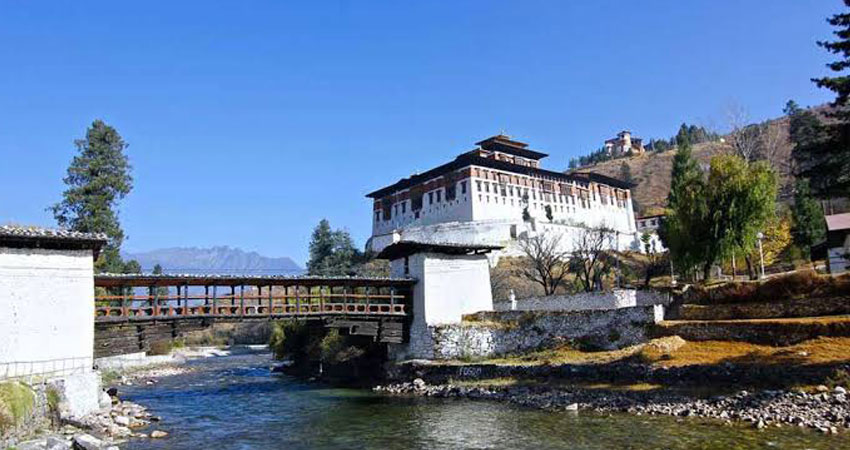
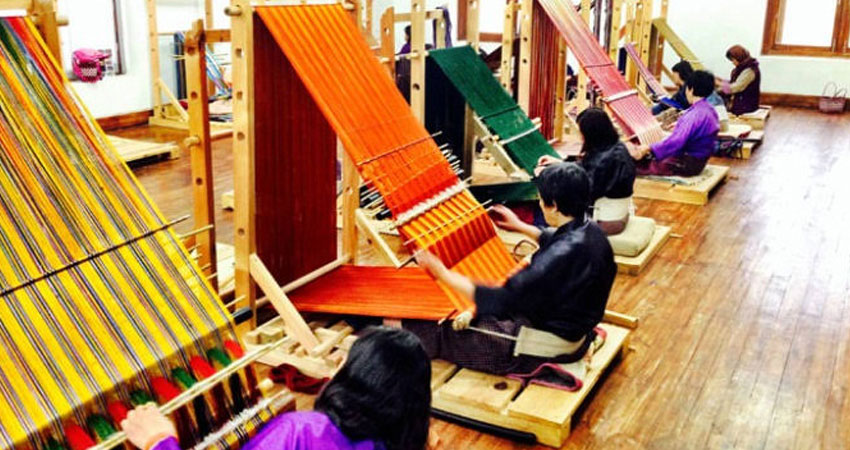
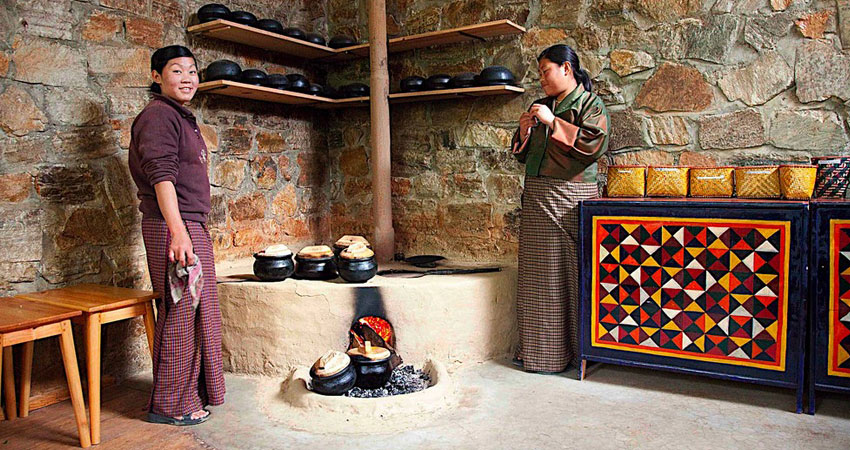
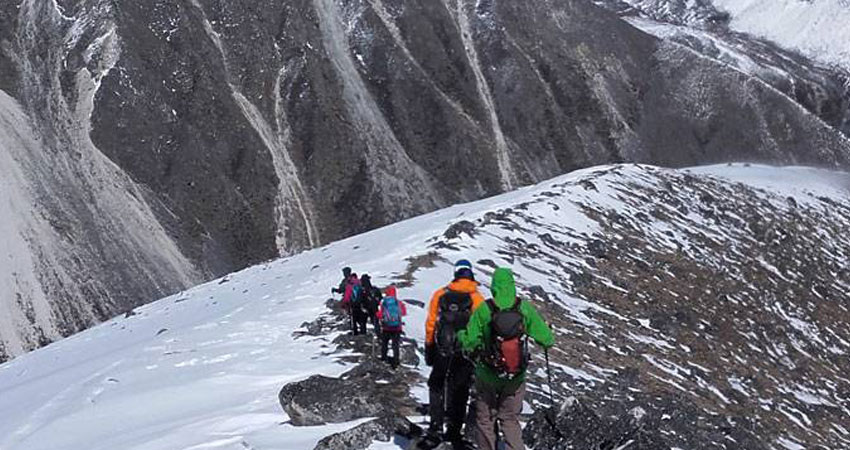
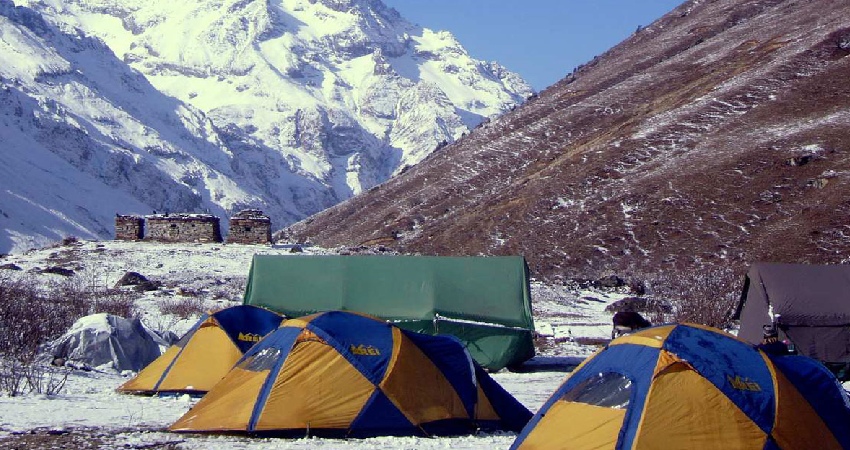





Trekking in Bhutan gives you an additional conventional opportunity to investigate the semi-tropical and snow-capped woods at the lower height which is an environment with an abundance of fledgling life & vegetation. The best seasons of Bhutan treks are spring and autumn. Boundless adventure leads you with expert to the bottom of the wilderness, traditional lifestyles, and the cultural heritage of Bhutan. In this nine days programme six days will be on trekking while two days to experience the religion, culture and heritage of the country. During the trekking programme you will be staying mostly in camps where the amenities will be just basic.
The flight to Paro is one of the most spectacular in entire Himalayas. Journey offers magnificent views and an exciting descent into the Kingdom. Bhutan’s first gift, one disembarks from the aircraft is the cool, clean and rejuvenating mountain air. After immigration formalities and baggage collection, warmly received by our representative and afterwards transfer to the hotel.
Afternoon visit Rinpung Dzong, which has a long and fascinating history. Built in 1646 by Zhabdrung Ngawang Namgyal, the first spiritual and temporal ruler of Bhutan, the Dzong houses the monastic body of Paro, the office of the Dzongda (district administrative head) and Thrimpon (judge) of Paro district. The approach or exit to the Dzong is also through a traditional covered bridge called Nemi Zam. Rinpung Dzong is also the venue of Paro Tshechu, held once a year in the spring.
Evening an exploratory walk around Paromain street, visiting local shops lined on both sides of the road.
Dinner and overnight at hotel.
Breakfast at hotel.
Drive to the base of Drukgyel Dzong, which is currently under restoration. On a clear day, there is fascinating view of Mount. Chomolhari (7314m) from the village below this ruined fortress.
Later take a short drive to Satsam Chorten (trail head point) for a walking excursion to Tiger’s Nest (Taktsang Lhakhang) (approx. 5-hour round trip walk). This most famous of Bhutan’s monasteries is perched on the side of a cliff 900m above the Paro valley floor. It is said that Guru Rinpoche arrived here on the back of a tigress, and meditated at this place, hence the monastery is also called ‘Tiger’s Nest’. This site, which has long been recognized as a most sacred place, was visited by Shabdrung Ngawang Namgyal in 1646, the religious and temporal ruler of Bhutan. It is a place of pilgrimage which Bhutanese try to visit at least once in a lifetime. In April 1998 a fire had severely damaged the main structure of the building but now it has been fully restored to its original grandeur.
Later visit Kyichu Lhakhang, one of the oldest monasteries of the Kingdom associated with the introduction of Buddhism in Bhutan.
Meals and overnight at hotel.
Breakfast at hotel.
Visit Ta Dzong, the National Museum, holding fascinating collection of art, relics, religious thangkha paintings, handicrafts, masks, costumes, armour and Bhutan’s exquisite postage stamps. The visit will provide an insight into the rich and unique cultural heritage and tradition of Bhutan.
Packed Lunch.
Begins the trek from Ta Dzong. Though today’s a short trek distance but arduous as one need to climb more than 1,000m elevation. The trek follows a gravel road past a few farms for about 30 minutes and then climbs up a steep ridge before leading through blue pine and fir forests to Damche Gom. If the weather is clear Paro valley can be seen with snow-capped mountains behind. Once one reaches the ridge below Jili Dzong, descend about 100m to the campsite below the Dzong.
Dinner and overnight at camp in JILI DZONG.
Breakfast at camp.
The day begins with an hour and a half climb and then later the ascent is more gradual. The trail takes you through thick alpine forests and rhododendrons. You can have fine views of Mount. Jhomolhari and other snow-capped peaks if the weather is clear and may hear some monal pheasants calling during the day. You may see yak herders around your camp site. Packed Lunch.
Dinner and overnight at camp at Janchulakha (Altitude 3,770m)
Breakfast at camp.
The trail follows the ridge, and on a clear day the views of the mountains and valley are sensational. One will enjoy a great view of Jichu Drake (6,989m), the peak representing the protective deity of Paro. The camp is close to the Jimilang Tsholake which is famous for its giant-sized trout. Packed Lunch.
Dinner and overnight camp at Jimilang Tsho (Altitude 3,870m).
Breakfast at camp.
The trail takes you through dwarf rhododendron trees and passes by the lake of Janetsho. Today you may come across some yak herders’ camps and get an idea of how these people live. If you are lucky, you can catch a lake trout for the dinner. Packed Lunch.
Dinner and overnight at camp at Simkota (Altitude 4,110m).
Breakfast at camp.
Today begins with a gradual climb, and if the weather permits you will enjoy majestic views of Mt. Gangkar Puensum, the highest mountain in Bhutan, and a host of other peaks. The trail slowly descends through juniper trees to a campsite at Phajoding. Packed Lunch.
Dinner and overnight camp at Phajoding (Altitude 3,750m).
Breakfast at camp.
After visiting Phajoding monastery built in 15th century by Shagcha Rinchen who introduced Drukpa Kagyu School in Bhutan in the 13th century, trek downhill to Thimphu passing through a forested area of mostly blue pine. Taking a leisurely pace, you reach Thimphu in about 3 hours.
On arrival, in Thimphu check-into the hotel. The capital town of Bhutan and the centre of government, religion, and commerce, Thimphu is a unique city with unusual mixture of modern development alongside ancient traditions. With the population of about 1,00,000 it is perhaps still the world’s only capital city without a traffic light. Lunch at hotel.
Later in afternoon walk around National Memorial Chorten, a large white structure crowned with a golden spire. It is located close to the center of Thimphu city and is one of its most iconic monuments. This is the most ideal spot to interact with locals who throng in large numbers to circumambulate the chorten, whirl the large red prayer wheels and pray at a small shrine inside the gate. The paintings and statues inside the monument provide a deep insight into Buddhist philosophy.
Afterwards take a stroll around Thimphu main street and market area.
Dinner and overnight at hotel.
Breakfast at hotel.
Drive to see the iconic gigantic Buddha Dordenma (Vajra seated), the world’s largest sitting bronze statue. Majestically situated at Kuenselphodrang, it is an object of great veneration to all sentient beings. The land at Kuenselphodrang measuring 145 acres was gifted to Monks Body by His Majesty the Fourth King of Bhutan. Dedicating it to the 60th birth anniversary celebration of His Majesty the Fourth Druk Gyalpo, His Holiness the Je Khenpo consecrated the 201 feet tall Buddha Dordenma statue at the Kuenselphodrang on 24th September 2015.
After this insightful visit drive to Textile Museum, established in 2001 under the royal patronage of Her Majesty Gyalyum Sangay Choden Wangchuck. The museum is managed by the Department of Culture, Ministry of Home & Cultural Affairs, Royal Government of Bhutan.
Institute for Zorig Chusum, commonly known as Arts & Crafts School or Painting School is an important learning center that offers a six-year course on the 13 traditional arts and crafts of Bhutan. On a visit, one can see students learning the various skills taught at the school.
Located below the main town, Centenary Farmers Market popularly known as Weekend market is a pleasant, colourful & delightful place to mingle with locals. Farmers come from all over the country to sell their farm products in this market. Lunch at a local restaurant / hotel.
Then visit Changangkha Lhakhang, one of the ancient temples in Thimphu established on a site chosen by Phajo Drukgom Shigpo, the founder of Drukpa line age in Bhutan. From temple courtyard, there is fascinating view of Thimphu valley.
Visit of Trashichhoedzong, that has been the seat of the government since 1952 and presently houses the throne room and offices of His Majesty the King, the Secretariat and the Ministries of Home affairs and Finance. It is an impressively large structure, surrounded by well-kept lawns and beautiful gardens.
Evening free to explore the government-run Handicrafts Emporium and local crafts Bazaar.
Dinner and overnight stay at hotel.
Breakfast at hotel.
Transfer to the airport for flight to onward destination.